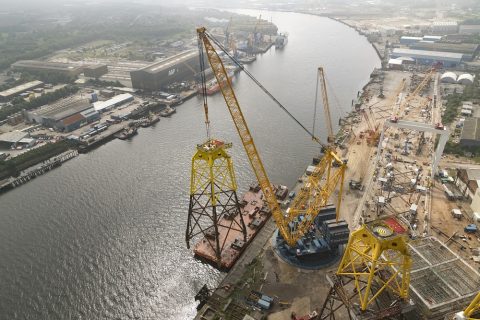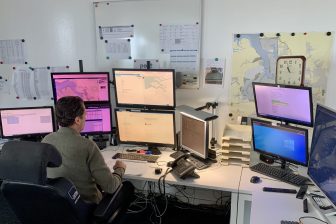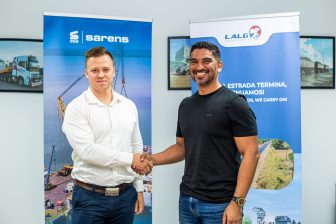
South Korean floating offshore wind brings heavy hitters to town
South Korean floating offshore wind projects have prompted the likes of Technip Energies to secure pole position in the market. The company has signed a collaboration memorandum of understanding with infrastructure provider Young Chang and heavy lifting solutions provider Sarens.
The cooperation covers the development of an integrated solution to provide floating wind turbine marshalling and integration services, using Young Chang’s Shinan yard and Sarens’ capabilities in heavy lifting and engineered transport. The agreement is key for unlocking and supporting the ambition to start up the floating offshore wind industry in South Korea, the company said.
Willy Gauttier, VP Floating Offshore Wind of Technip Energies, said, “We are pleased to join forces with Young Chang and Sarens for our floating wind projects in South Korea. The complementary nature of the three parties will enable us to offer our customers the possibility of integrating turbines on our floaters at Young Chang’s Shinan yard. This agreement illustrates our commitment to solving integration challenges in our floating offshore wind business.”
“We are delighted to collaborate with Technip Energies and Sarens as one team to provide a complete service for marshalling and integration activities relating to floating offshore wind power projects. With Technip Energies’ project leadership and Sarens’ mobilization capacity, we will focus on Korean market first and look forward to other global opportunities,” added Gill-Sik Park, CEO of Young-Chang Heavy Industry.
Under its Renewable Energy 3020 Plan, South Korea aims to add 16.5 GW of new wind power to its energy mix by 2030, bringing the total wind production capacity to 17.7 GW, or 28 per cent of the country’s energy mix. Out of this figure, 12 MW is set to come from offshore wind sources, according to the data from the Ministry of Trade, Industry and Energy.
You just read one of our premium articles free of charge
Register now to keep reading premium articles.




